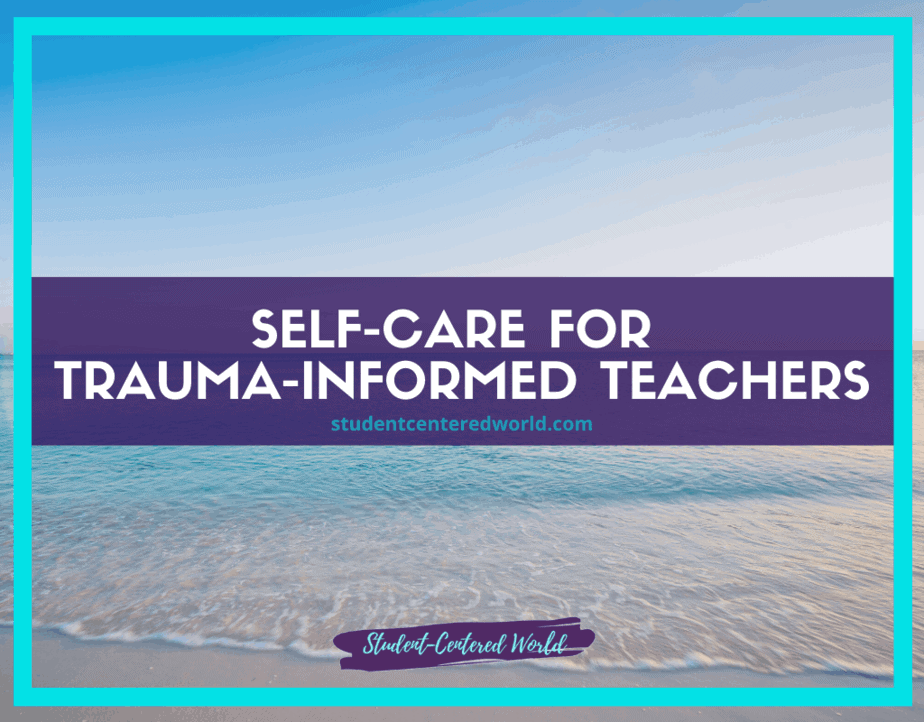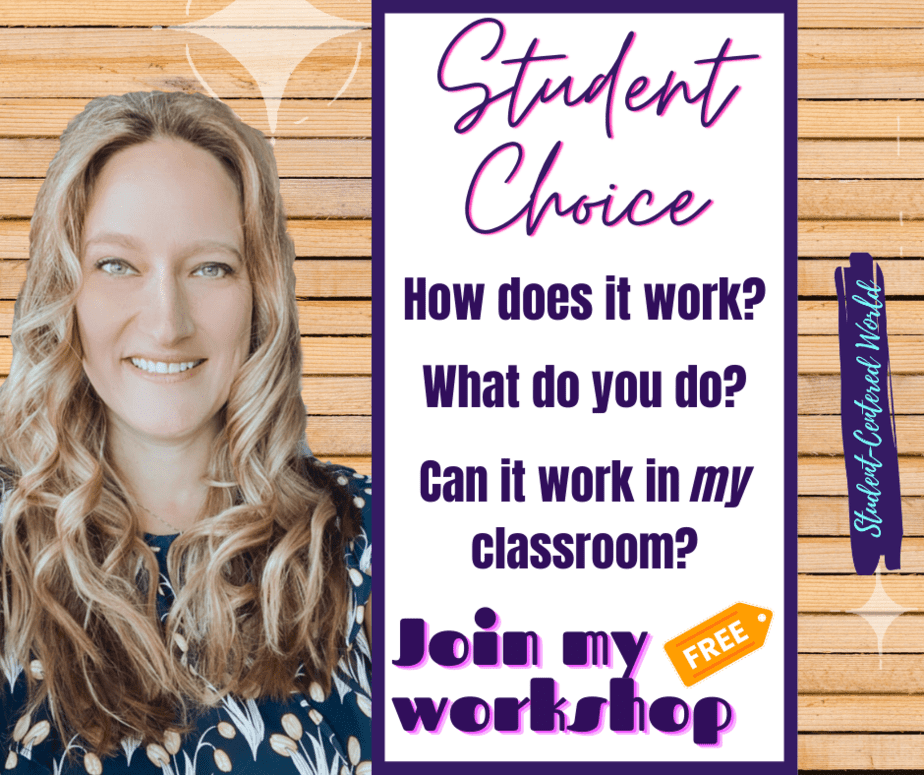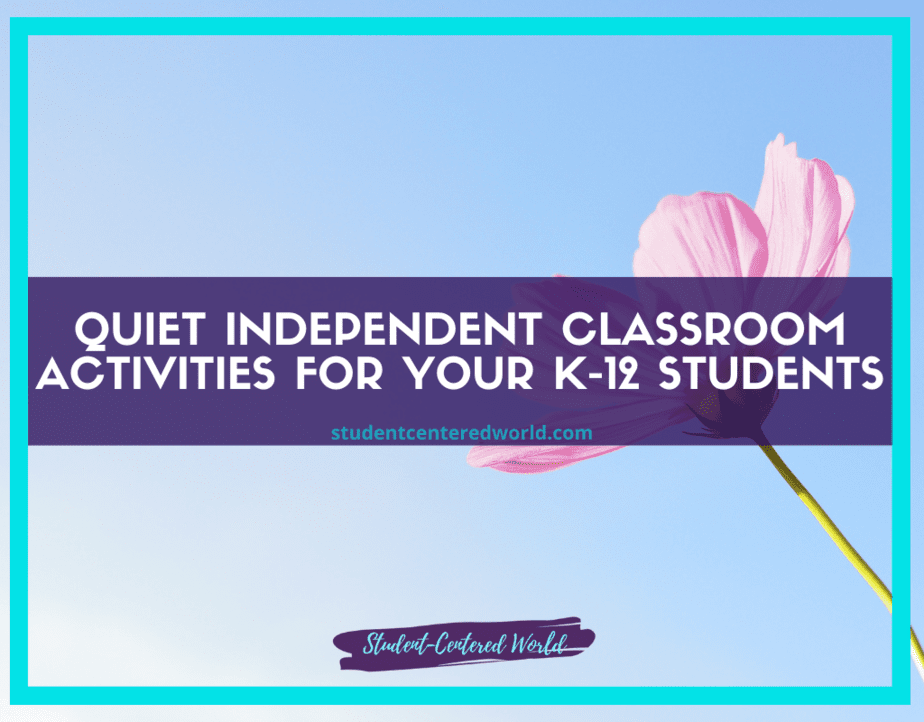K-12 Distance Learning Clarification for Stressed Teachers
Whether or not the concept of distance learning, blended learning, hybrid learning, or any of the other buzz words surrounding some type of digital education ever interested you, 2020 thrust many teachers into some type of model that took them so far outside of their comfort zones that they couldn’t even see them anymore.
Some districts did this better than others (which might just be an understatement). Some teachers found it easier to adapt than others. However, there is one constant through it all (and I want you to hear me out on this one)…
Being thrust into distance learning will make you a better teacher in the “normal” classroom.
It might not seem like it while you’re in the trenches. You may be more stressed than you have ever been, or perhaps you’re at the opposite end of the spectrum and are actually taking the change of pace as a breath of fresh air.
It doesn’t matter because every single eTeacher will end up being a better classroom teacher because of this distance learning experience.

Why Distance Learning will Improve your Classroom Teaching
I gave my first workshop in 2014. It was a very basic lesson in how to turn any topic into a student-led lesson. After this workshop, my peers started slowly coming to me to ask for advice.
Many of them made slight tweaks that changed the entire dynamic of their classroom.
Others? Well, they started all their replies to my suggestions with one of the following:
- I would, but…
- I can’t, because…
- That won’t work since…
How many times have you begun a reply about something “new” with one of those starters?
I began Student-Centered World in 2018 with the urging of my co-workers. I had mastered the art of student-centered learning over a number of years of trial and (lots of) errors. Every time I helped my colleagues, either in a formal or informal sense, they always would shake their heads and ask what my future plans were.
Many thought I should get my administration certification, but I never really saw myself enjoying that role.
When I mentioned that I was getting extremely passionate about helping other teachers, they said I should absolutely take that and run with it.
I’m glad I did because it gives me a really different perspective, that of teacher AND educational influencer.
When the mass school shutdowns began, teachers were flustered, to say the least. I quickly started our mastermind group on Facebook to have a welcoming community where teachers could discuss their concerns and bounce ideas off one another. Literally, being kind was a requirement to stay in the group.
As the days moved on, it was clear that the panic was dissipating, and instead, a growing curiosity and, in some cases, a means to an end were being searched for more than a general understanding of what was to happen.
Guess what happened?
- I would, but…
- I can’t, because…
- That won’t work since…
All those sentence starters began being used less and less. Sure, there are some technical issues sometimes. Other times there is a lack of engagement with the students for a myriad of reasons that may be putting a hiccup in the distance learning plans (and I will address ways to counter this below).
But overall? Those woulda, coulda, shoulda comments turned into “Okay, well how can I…” instead.
The biggest win? “But I’ve always done it this way” has gone by the wayside.
It’s literally unable to be used as an excuse in this situation.
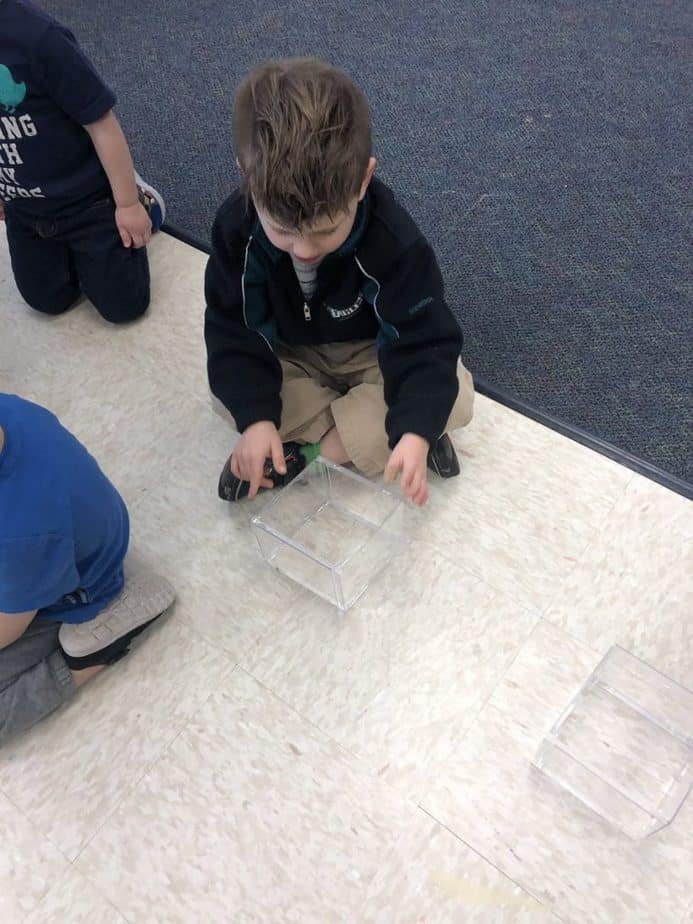
The Long-Lasting Effects of Distance Learning for all
So what? Right? After all, once distance learning is over, it’s back to business as usual, isn’t it?
Nope!
My friends, I want you to separate yourself from this for a moment.
So many of us (myself included) have learned about new, state-of-the-art concepts or devices in teaching over the years, but how many of us had the time to learn how to implement them properly, then tweak it appropriately for our own students, and then execute it while keeping on target with our learning goals?
We’ve all been to some great professional development courses where we love what is taught, but then never have time to do more than scrape the surface of the idea in practice.
How many of your districts have had the luck of going 1:1 with technology (or at least the ability to have the technology when you request it), but the devices turn into just new ways to do the same paper activities, yes?
We have literally been given a gift right now.
Raise your hand if you’ve learned about a new program or app or website during distance learning that is helping you in some way.
Guess what! All of these fun new tools that you’re using to try to engage your students digitally won’t be going anywhere once you’re back in the classroom!
Leaving Your Comfort Zone
Truly, the entire situation has a giant silver lining: it is taking everyone out of their comfort zone and making them learn something new. Students, teachers, administrators, everybody.
Obviously, it would be better for the greater good if it hadn’t happened, but if there is a silver lining for education, this is it.
We need to take this moment and seize it for all it’s worth.
Let’s think about what we’ve learned as teachers by being forced to attempt distance learning. This might be different for everyone, but distance learning did make all try new things, work on new strategies, and the best/worst part is that it brought into the forefront the concerns we have all had about education for quite some time.
I’m not saying that distance learning solved these problems, but at least we were validated in that way.
Now what?
It’s important to make sure you are keeping track of everything you are doing while distance learning. You can create a spreadsheet or a running list that is handwritten, however, you feel the most comfortable when it comes to organization (as tech-savvy as I am, I must psychically write on a calendar to keep myself together).
The purpose of this is so you can refer back to what you enjoyed or learned a lot about, even if you only used it a bit. You can revisit for other lessons and activities once you return to the classroom.
Props if you have the steam left at the end of the day to actually start making some of those changes for future lessons!
Also, consider taking the time to work on some professional development that you’ve been wanting to do and didn’t have the time for….or the time to implement.
Now is the time to seize that moment!
My own professional development course that I offer explains how to turn your classroom into a 100% student-centered environment. Unlike other PD courses that discuss a lot of theory and then leave you on your own to implement (have you noticed yet that I hate that?), you will actually be creating your lesson (or unit) as you go, so by the time you’ve finished the course, you’re already set in motion.
And guess what? You can incorporate a lot of the “new toys” you learned from distance learning into your lessons!
Distance Learning: An Easy How-to Guide
If a teacher has never done any type of distance learning, it can be a flood of emotions.
It seems overwhelming, nerve-wracking, and confusing.
I am here to promise you…PROMISE YOU…it isn’t that bad.

For three years, I taught a blended learning elective at my school.
I worked at a CTE high school, so with requirements for shop hours in addition to basic core academics, there was simply no room for electives.
We piloted a program to try to overcome this for students who wanted a little extra.
A colleague and I put in a proposal to teach Human Behavior, a morphed psychology and sociology class.
Hands down, it was the most sought-after class in the program.
To run the class, we met after school one day a week for 2 hours and then met online via Google Hangout one evening a week and did distance learning. Students were issued a Chromebook for the duration of the class and everything was 100% student-centered.
Each week to start had a different theme that dealt with psychology and then the last several weeks put all of that knowledge to use in creating a sociology experiment to prove a hypothesis based on what they had learned throughout the course.
Each week had content, surveys, and experimental responses.
It was awesome.
When I think back about my time in the program, there is a special place in my heart for that first group of kids.
For one thing, we all figured out how to do distance learning together.
This is what I learned from those moments that I unequivocally, without a doubt think that anyone who is figuring out distance learning must know…
It’s going to have bumps in the road
On your first day or so working on an online platform through distance learning, something will go wrong.
Many things may go wrong.
That doesn’t mean it’s doomed to failure.
If you have six hours’ worth of lessons planned on your very first day, take a deep breath….there’s a really good chance it’s not going to happen.
Someone’s internet will be down. Someone’s computer won’t connect. Someone (or their parent) will be texting someone else in the class to tell you that they’re trying, but it’s not working.

Relax. It’s okay.
You need to allot time that first day of distance learning to work out all the kinks.
Stay. Calm.
Have a notebook and keep notes of who is having what issue. Work through them step-by-step. If your school is having you work on a bell schedule and all of a sudden it’s time for the next class, it’s fine.
Go back during your prep time and see what issues you can work out and what you might need to contact someone about.
Where there’s a will, there’s a way. Everything WILL work out.
How you structure that online time will make the difference
You absolutely, without a doubt, MUST make distance learning conversational.
I can’t emphasize this enough.
Chances are, you have taken part in some type of webinar in your lifetime.
As an ADULT, how many times can you honestly say you watched the entire thing and didn’t switch over into a new tab to “multitask”?
Think about it.

I have mentioned before that we are teaching Generation Z. Yes, they’re tech-savvy, but the statistics today say that the average attention span is 8 seconds. 100 years ago, it was 23 minutes.
All you need is one shiny butterfly and they’ll be gone.
So how can you combat that during distance learning?
First, have a plan of what you want to cover if you’re live chatting during the distance learning.
Make sure the student’s cameras are on so you can see them.
I once had a student try to tune in to the distance learning class and then leave the room…for the whole class.
However, there has been a lot of conversation about why some students are uncomfortable having the camera on. If this is the case, IT IS OKAY…but you need to have some type of agreement with that student to prove that they are still actively engaging.
This will come down to an individual conversation and relationships, relationships, relationships.
Also, make sure the students all know to mute their microphones when they’re not speaking. Background noise will get old really quickly. You can do this for all students at once, but if you are having a conversational activity, it is easier to give the students the free reign to control their own mics.
(ad)
From here, you need to know your students to decide what will work best.
I have done different things during distance learning depending on the nature of what I wanted them to achieve.
I have done a full class, where everyone is in one Google Hangout. That was good if everyone was discussing a topic (in my class, we used Google Hangouts to discuss the results of the surveys they would complete for homework in between the in-person class and then the distance learning class).
I have also broken the students into groups. They each go into their own chat and would invite me as well, so I would pop in and out of each one to see where they were with things and answer any questions that would come about.
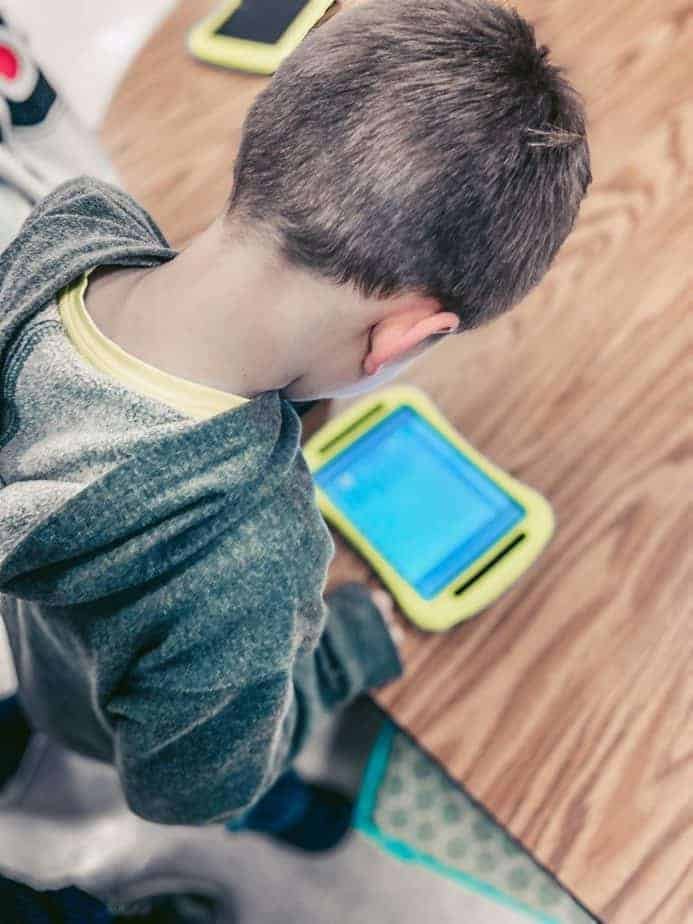
Also, a good idea when planning this out is to utilize the internet!
It’s literally right there in front of everyone. Scavenger hunts are good. Everyone can be part of the chat but searching for things in another tab. You can see their faces as they do it and can tell quickly who is engaging and who isn’t.
Don’t be afraid to call on students who may be distracted. It only takes a time or two before they realize that even though they’re on their couch, you’re still doing something.
Also, don’t try to have them live on the chat all day long if you can help it. I spoke with a teacher in Hong Kong who said that some teachers are on week six (at the time) of doing just that: online school as if it was live in the classroom. He said that EVERYONE was absolutely exhausted in every sense of the word and it just couldn’t be sustained much longer.
If you’re scrambling still to figure out a happy medium, consider an inquiry project. Your students will have a lot to say each time you speak, especially if you give them a list of questions they need to answer (and create) as time moves forward, that’s for sure!
Interruptions can…and will…happen
I’ll never forget it. I was on a Google Hangout with a small group of my students discussing their last-minute preparations for their final projects. I had gone into the bedroom and shut the door, which was supposed to be the universal signal for “Mommy is working right now”.
I guess the memo got lost that day.
My kids bust into the room, about age 5 and 3 at that point, in some type of savage fight that only two little boys can have.
I wish it was over something epic.
It wasn’t.
I then spent the next 30 seconds to a minute holding my laptop as I ran around the room, tried to quiet them down, boot them back out into the hallway, and still keep a conversation going with my students.
Needless to say, all of that failed.
My students were in stitches laughing.
I might have even broken a sweat.
The takeaway? It was the best live birth control I could have given them at the moment.
I digress.
Interruptions are going to happen. Guess what? It’s going to happen on their end, too.
The best you can do is attempt to keep them to a minimum and also be flexible.
Don’t make your student embarrassed or feel bad if all of a sudden their 140 pound Golden Retriever wants to join in the conversation.

Address it in a lighthearted way and move on.
Remember, at the end of the day you already know your students. You know which one is going to do every single thing you ask.
You know which one is going to be attempting to play video games the entire time.
You also know which one is going to claim every single technological issue that can possibly arise.
Let me tell you something though: this is also new to the kids. They might surprise you. They are just as uncomfortable as you are.
Their parents and siblings and dogs are home with them, just as yours are.
It’s like the stillness of the first day of school, but you already know your kids.
It’s like the first day of a new school, where everything is new so there’s excitement and also a little trepidation, but you already know your kids.
I promise you…it’s going to be fine!
Reaching Reluctant Learners at Home
Just reading that segway, so many of us have specific faces that pop into our minds.
Each one of our students has their own personal story, but some of them tug at our heartstrings more than others.
We know the students who we worry about when they’re not with us. The ones that we lay awake at night thinking about, wondering if there is anything we can do differently for them.
When school is closed for an extended period of time, be it in a natural emergency or for school vacation, it is especially stressful as teachers often struggle to find ways to keep in communication with these students.
If there is an expectation that work is completed during this time, it adds an extra layer of angst.
In speaking with teachers in this situation, it is clear that this is the number one issue plaguing so many of them.

Teachers Can Only Do So Much
Much like within the classroom, there is no one-size-fits-all answer to reaching students outside of the walls in our buildings.
If we’re being honest, some of them may very well be completely off the grid if they aren’t present in school.
When it comes to a lack of communication, it’s important to determine why before coming up with a plan to combat it (to whatever degree you can).
Many students, no matter their age, go home and assume what we would consider being “mini adult” lives. If they’re not in school, it is very out of sight, out of mind, especially if education is not a high priority within a family.
No matter how hard we try, this is a barrier that we might not be able to overcome in a school year.
No teacher wants to admit this, but it’s a level of acceptance that is necessary in order to relieve a little of that “teacher guilt” from the experience.
I’m not saying give up; I’m saying just know that you can’t save everyone.
Location, Location, Location
Sometimes, the physical location of our students has a lot to do with them being off the grid.
Sometimes, they may literally be off the grid.
They may live in a rural area, somewhere that cell phone signal is sparse, an area where the internet is not offered, or their home situation may change frequently enough that there is nothing concrete in place from day-to-day.
Even in the most affluent districts, this can still be a reality for some students.
Socioeconomics can also be a huge factor. Even if you put forward my suggested best practice of polling your students to know what type of devices they have access to at the beginning of the year, that can always abruptly change (in either direction) with one change of an employment situation or an unexpected move.
Don’t assume everything is the status quo.
Basic Ideas to Start
According to the NTIA, “14 percent of the U.S. population between ages 6 and 17 lived in homes with no Internet service, down from 19 percent in 2015” (NTIA 2018).

While this is certainly a downward trend, that still leaves a lot of children without the internet in their homes.
As a matter of fact, a late 2018 survey from the Pew Research Center found that “nearly one-in-five teens can’t always finish their homework because of the digital divide” (Pew 2018)
If you know that the issue is an accessibility one, it only takes a few minutes and a quick Google search to plug in an address and find free wi-fi spots nearby.
Many internet service providers also have programs to give families with students who fit certain criteria free or reduced internet access so a student can complete school work.
It might take a little research, but presenting this information in full to a family might make a huge difference. They may not be willing to put in the time to research themselves because it is not a priority.
If the information is readily available, it can do wonders.
What if accessibility isn’t the issue for distance learning?
In many situations (as I addressed above), factors that don’t include accessibility are 100% the problem.
The best that we can do as a teacher facing this hurdle is doing everything within our power to show a student how valuable an education is.
We only have power over so much.

We can call, text, send letters, drop off packages, smile, laugh, give out prizes, call again, have friends call, give out literature, create strong relationships, and invite them over for tea.
Sometimes, none of it is enough when more pressing matters take priority.
When I taught in a Title I high school, I often said the same statement over and over to my struggling students:
“The only thing no one can ever take away from you is what you know.”
More often than not, that struck a chord with a student who couldn’t see the benefit of worrying about school.
Not always, but sometimes.
There is no solid answer here, but the questions surrounding this issue are starting to get louder. Don’t get frustrated, take action. Start a committee within your school, district, or state. What are the challenges? What can be done to overcome these hurdles on both micro and macro levels?
Nothing will be a quick fix and these conversations will be debated before this issue is settled. However, there have always been issues in educational equality and as the conversations got louder, solutions became more negotiable.
Nothing in education is perfect, but as people in the frontline, we certainly should keep trying. Even if we help one student, we’ve made a difference.
Stop Driving the Teacher Struggle Bus
Are you struggling with student engagement, apathy, or keeping your class on track?
💫💫 There’s hope! 💫💫
Join my free teacher workshop “Choosing Choice” and in just 60 minutes, you’ll craft a practical plan to revitalize your teaching. Discover the magic of student choice in boosting engagement, gain quick implementation ideas, and explore strategies for year-long success.
Unlike overwhelming workshops, my approach guides you in real-time, providing more classroom options, reducing stress, and giving you more personal time.
Plus, you’ll earn a 1-hour professional development certificate and have 7 days of access.
Don’t miss this chance to transform your teaching; click below to secure your spot now!
